The Seasonic PRIME Titanium PSU (650W, 750W, 850W) Review: Mythical Performance
by E. Fylladitakis on April 7, 2017 9:00 AM ESTCold Test Results
For the testing of PSUs, we are using high precision electronic loads with a maximum power draw of 2700 Watts, a Rigol DS5042M 40 MHz oscilloscope, an Extech 380803 power analyzer, two high precision UNI-T UT-325 digital thermometers, an Extech HD600 SPL meter, a self-designed hotbox and various other bits and parts. For a thorough explanation of our testing methodology and more details on our equipment, please refer to our How We Test PSUs - 2014 Pipeline post.
| Seasonic PRIME Titanium Efficiency (~25ºC Ambient Temperature Testing) |
||||
| % | Titanium Requirements (230AC) |
650TD | 750TD | 850TD |
| 10 | 90% | 93.1% | 93.2% | 92.9% |
| 20 | 94% | 94.2% | 94.2% | 94.1% |
| 50 | 96% | 96.3% | 96.2% | 96.1% |
| 100 | 91% | 94.8% | 94.8% | 94.8% |
We usually expect to see an 80Plus Titanium certified unit to borderline pass or even fail the certification requirements during our testing. This is because we are supplying 230V AC to the unit and most models have been optimized for an 110V AC input, as the certification requirements are significantly lower and makes it slightly easier for the designer to meet them. Seasonic positively surprised us because all three of the new PRIME Titanium units are extremely efficient, easily meeting the stricter 80Plus Titanium performance requirements with an input voltage of 230V AC. The top efficiency of all three units is ~96.2% when operating at 50% capacity, with a nominal load range (20%-100%) efficiency average of 95.1% (650W model) to 95.3% (750W/850W models). The low load efficiency with the PRIME Titanium PSUs operating at 10% capacity is above 84.5%, which is much higher than the peak efficiency many low-cost PSUs can hope to achieve. Still, the efficiency of the units once they reach 20% capacity is so high that the thermal losses actually seem to drop instead of increasing.
Please note that we had the hybrid fan mode disabled during our testing in order to showcase the low load noise levels with the fan turned on. With the hybrid mode turned on, the fan starts when the load reaches about 20-25% of the unit’s rated capacity.
The internal operating temperatures of the Seasonic PRIME Titanium are very low, which is to be expected with such an efficient design. The cooling fan initially appears to have a “ladder” behavior, increasing its speed in steps in relation to the load, but the thermal control circuit is actually linear. When the units are operating in an ambient temperature environment, the speed increases are just very small in relation to the fan’s operating range, which appears as a step-like behavior on a chart. The fan of any of the three units did not even reach 50% of its rated speed at maximum load under these operating conditions, operating way below its optimal range and barely reaching audible sound pressure level figures.
The hybrid fan mode is the only thing that does not make much sense with these three units. If the setting is set to off, the fan will start as soon as the PSU is powered on regardless of the load, but will still retain its minimum possible rotational speed until the thermal control circuit decides that it needs to spin faster. The fans of the PRIME Titanium units are inaudible when running at such low speeds. If the setting is turned on, the fans will start before the point they become audible with the setting turned off, meaning that there is no practical difference at low loads whether the fan is spinning or not. Considering that the fans of the units are inaudible when spinning at their minimum speed, it might be wise to keep the hybrid mode turned off. Lower operating temperatures can only increase the longevity of a PSU, even one as good as this one.


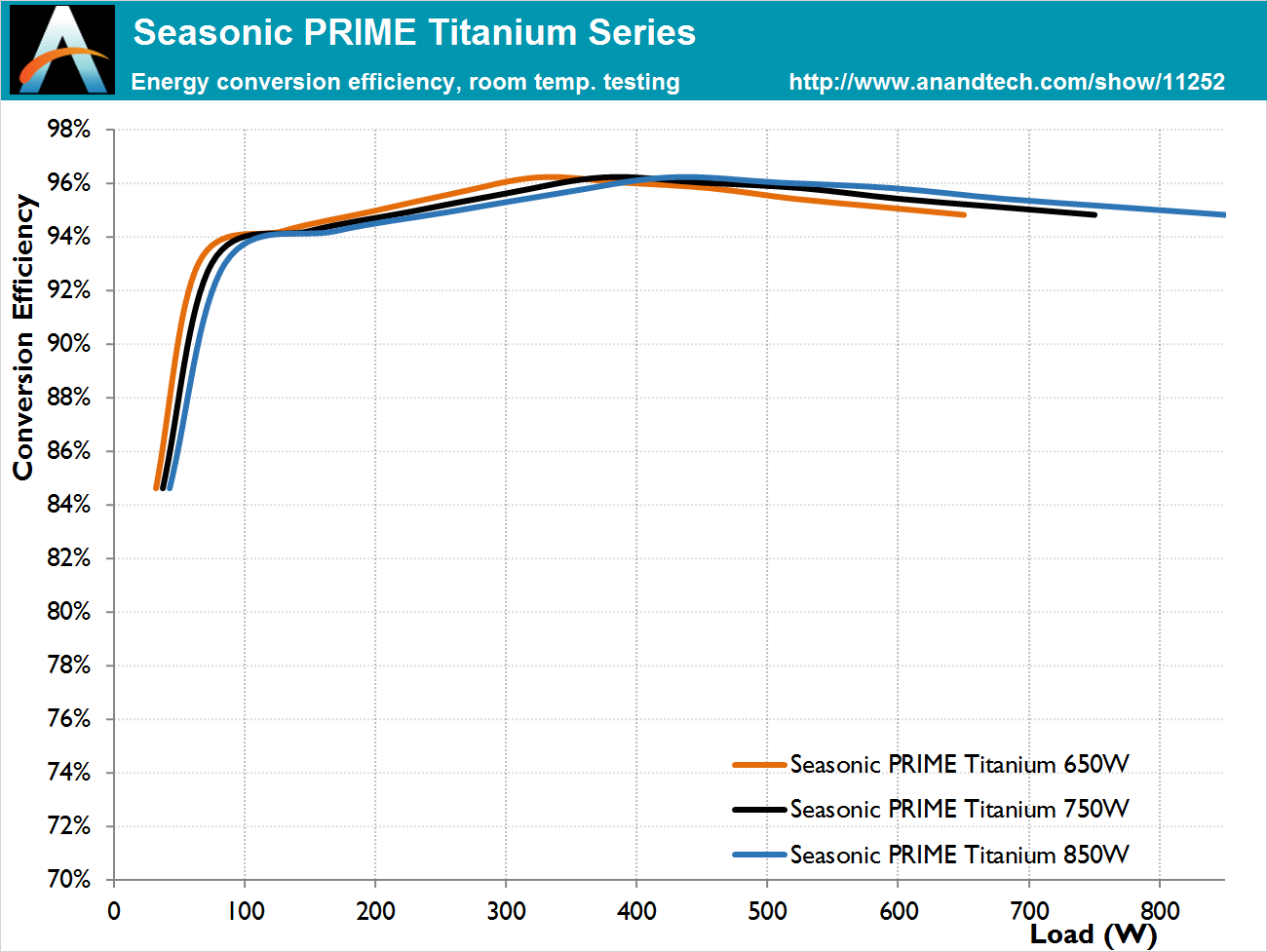
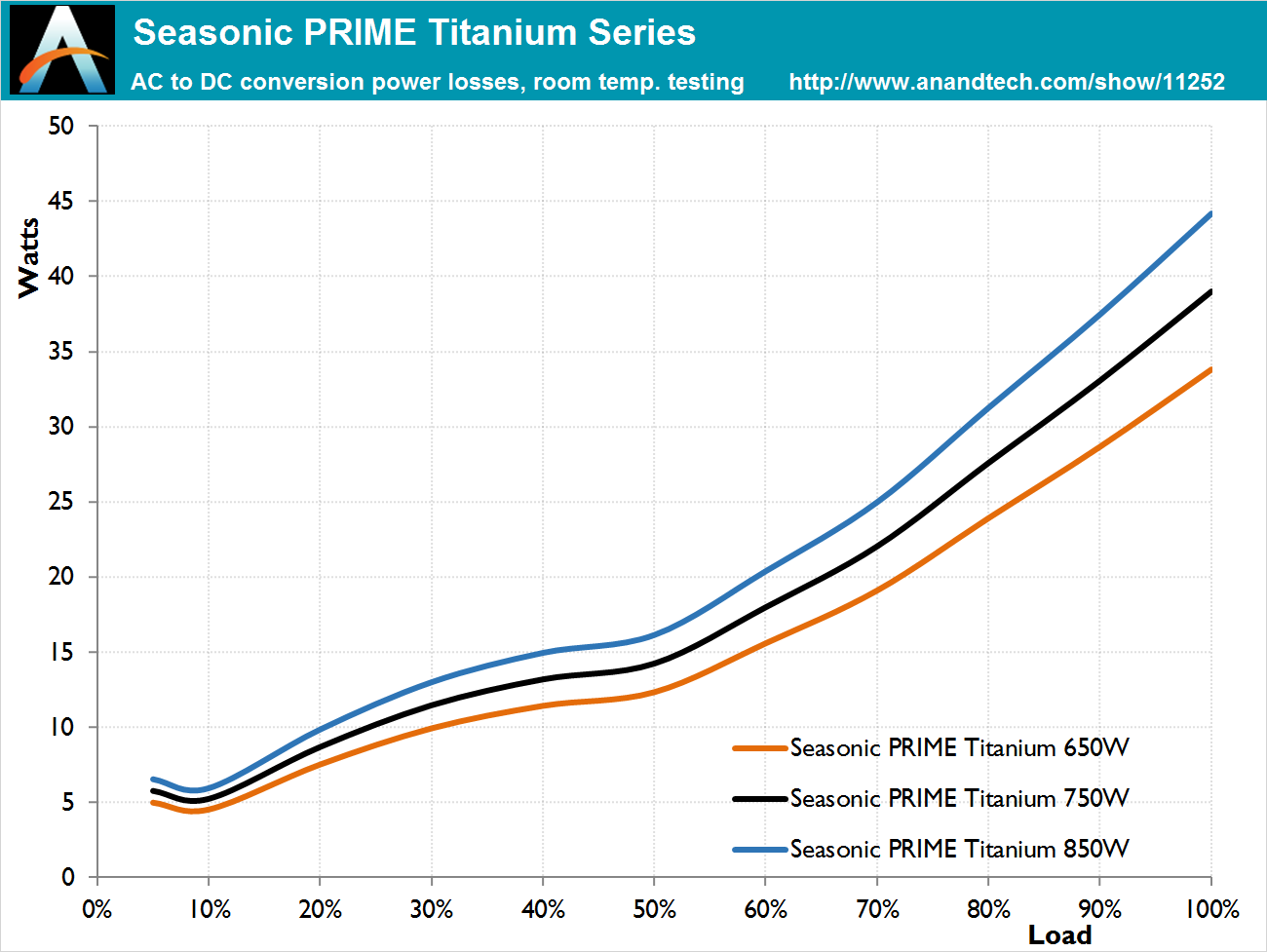
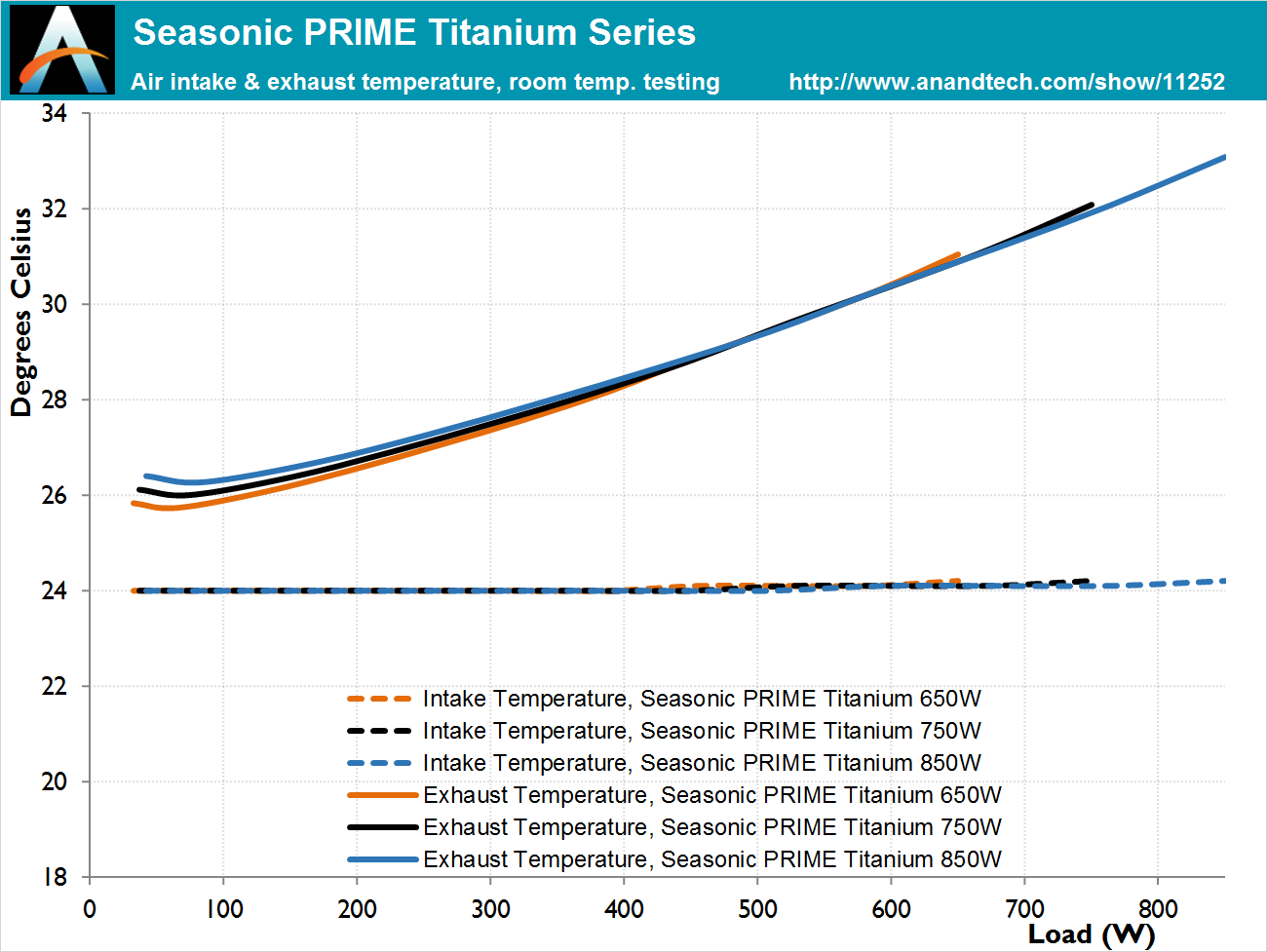
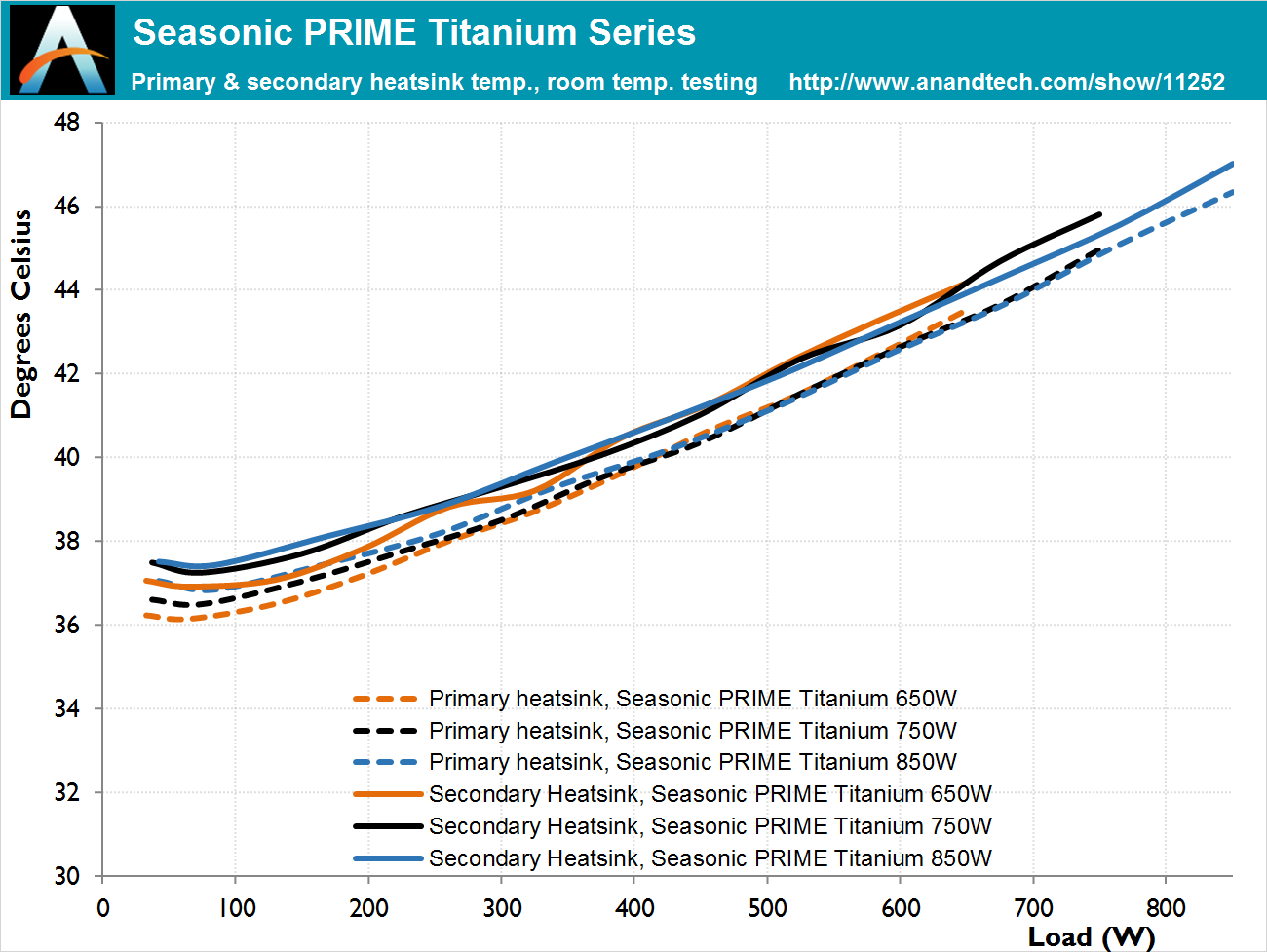
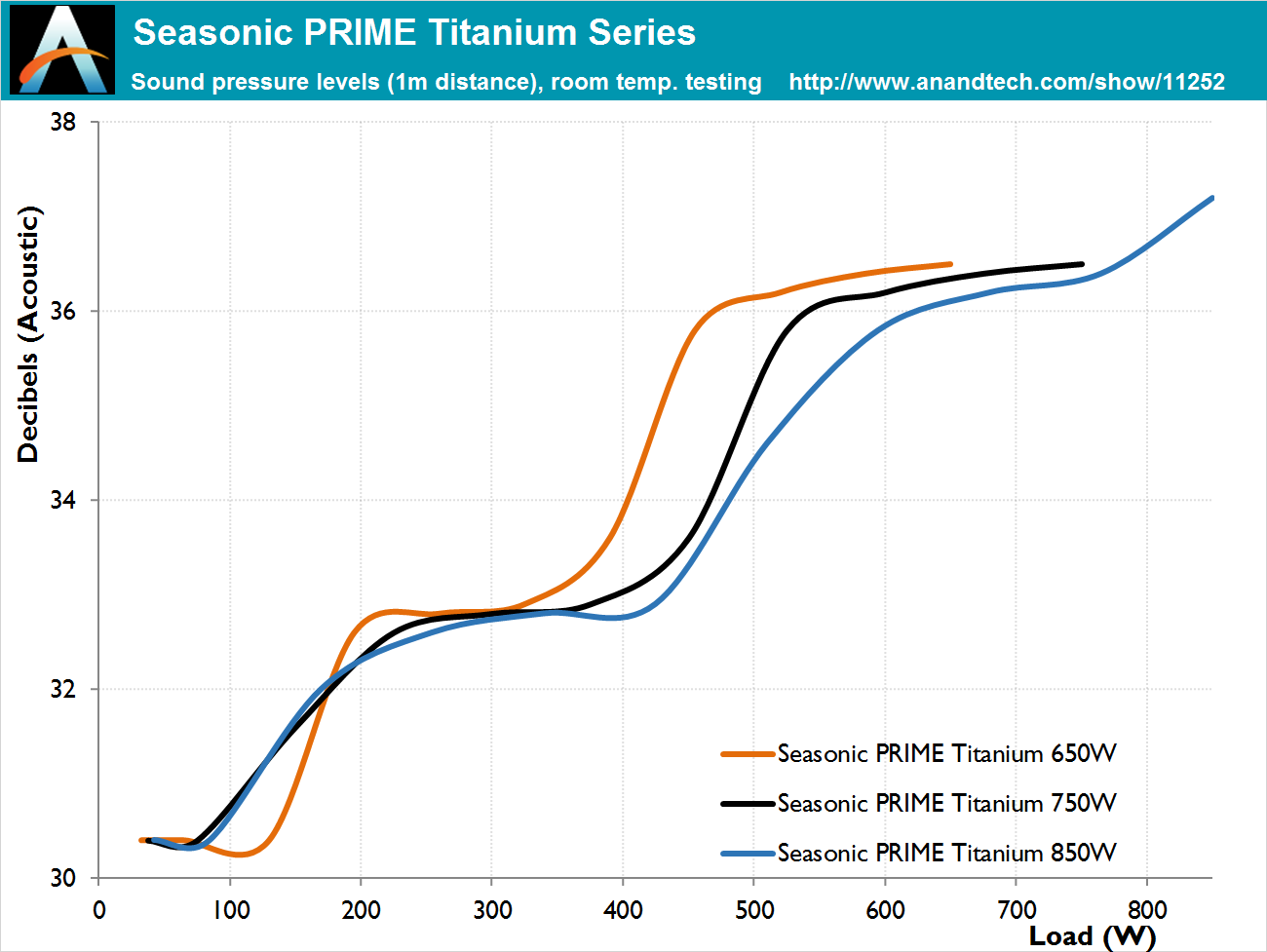








86 Comments
View All Comments
nagi603 - Friday, April 7, 2017 - link
Let's hope their eventual redesign won't be as bad as the X-series redesign was. I've had two fail (1 blew on first power-on, the other after half a year) while my original X-400 is still happy as ever after running out of its warranty, regularly driving ~400W of components.Freakie - Saturday, April 8, 2017 - link
In contrast, my 2nd gen X-750 has run like a champ for the last 4 years. My system also doesn't pull more than 450W so I keep the PSU power draw in the sweet spot which is why I got the 750W instead of the 650W.feelingshorter - Saturday, April 8, 2017 - link
I had the X-650, bought when it first came out in 2010 and used it in a computer that i rarely turned off until Jan of 2017 when I sold it. I payed $120 for mine at the time. But the competition is stiff and people are price sensitive, they do not want to hear why they need a PSU that expensive. I can imagine the company had to find ways to reduce costs on the X series, resulting in failures.I believe the PRIME Titanium series offered here represents the best the company can offer and we already know the company can produce a quality product, and quality costs money. The PRIME Titanium, at $160 shipped represents what the X Series was when it first came out.
azazel1024 - Friday, April 7, 2017 - link
They certainly appear to be awesome power supplies. I just wish someone would focus on the low power market for ATX power supplies. I realize as a heavy user, my rigs are rather lightweight, mostly because I have heavy use, but not rigorous gaming. My Desktop running a GTX750 and i5-3570@4GHz sips 122w with an Antec Earthwatts PSU under both gaming and Handbrake loads. I could probably push it up over 140 or 150w with something like furmark, but that doesn't represent a realistic load case. That is with a couple of HDDs, an SSD, 16GB (4x4) GB or DDR3 1866. No, not the most ridiculous system ever, but even if I slapped in something like a 1060 or whatever it is doubtful I'd push the system beyond about 250w.My server is running a Celeron G1610, an SSD and a couple of HDDs with 8GB of DDR3 (2x4GB) and an Intel ET GbE adapter. It sips 19w at idle with the drives spun down, 31w streaming to my AppleTV with the HDDs spun up and about 50w under max CPU load all with a Seasonic SSR-360GP.
Realistically most gamers probably don't even need something with more than about 400w of delivered power and most mainstream users/systems are looking at <200w peak. For some of these lightweight builds it would be really, really nice to see some high efficiency systems in ATX form factors that were targeted more at 100-200w range.
Even my Seasonic SSR-360gp as nice as it is, only manages about 75% efficiency at 19w and its power factor is about .72-.74
mjeffer - Friday, April 7, 2017 - link
While I agree 100%, it would be really nice to see some extremely high quality, lower wattage PSU, from my understanding it's a lot easier for them to hit higher efficiency ratings with higher power PSUs. However, I'd sacrifice the titanium efficiency for a lower power supply with the same top notch components throughout. I'd even pay good money for it. Sadly anything around 400W-500W is generally more focused on price than quality though some of the OEMs like Seasonic do make better ones in that range than you can find in your other brands.Mr Perfect - Saturday, April 8, 2017 - link
Yeah, it's the same thing down in the mITX space. My i7 + 1060 ITX is only pulling ~120ish watts while gaming. Something in the lower wattage range, and preferably in a SFX form factor, would be well suited. Other companies make them, but not in Seasonic's quality range.If I remember correctly, a Seasonic rep used to post comments on reviews of their products here, and he stated that they couldn't source 80+ Gold quality capacitors that would fit in SFX PSUs. I wonder if that's changed in the last few years.
SkipPerk - Wednesday, May 3, 2017 - link
I want to say that Enermax and Seasonic have high-end 400W units that are platinum rated. They are not cheap, but they are really nice. I want to say I saw a review of them compared, but I forgot where. Many of the high-end low power systems are fanless.Chapbass - Friday, April 7, 2017 - link
These units seem really cool, but the thing I really want to see is the 600w fanless unit. Wanted a fanless power supply for a long time.bji - Friday, April 7, 2017 - link
I understand your point of view, as I also appreciate fanless. However, just keep in mind that very few builds are going to stress these power supplies to a point where they'll even turn the fan on. I have a Seasonic 650W from years ago and I am not sure the fan has ever even spun up.JasperJanssen - Saturday, April 8, 2017 - link
Keep in mind the 600W fanless is probably just the 1000W model, minus the fan. Or maybe one of the others, but either way, it'll just literally be one of the other models minus the fan. *Possibly* with larger heatsinks, but I wouldn't count on it.